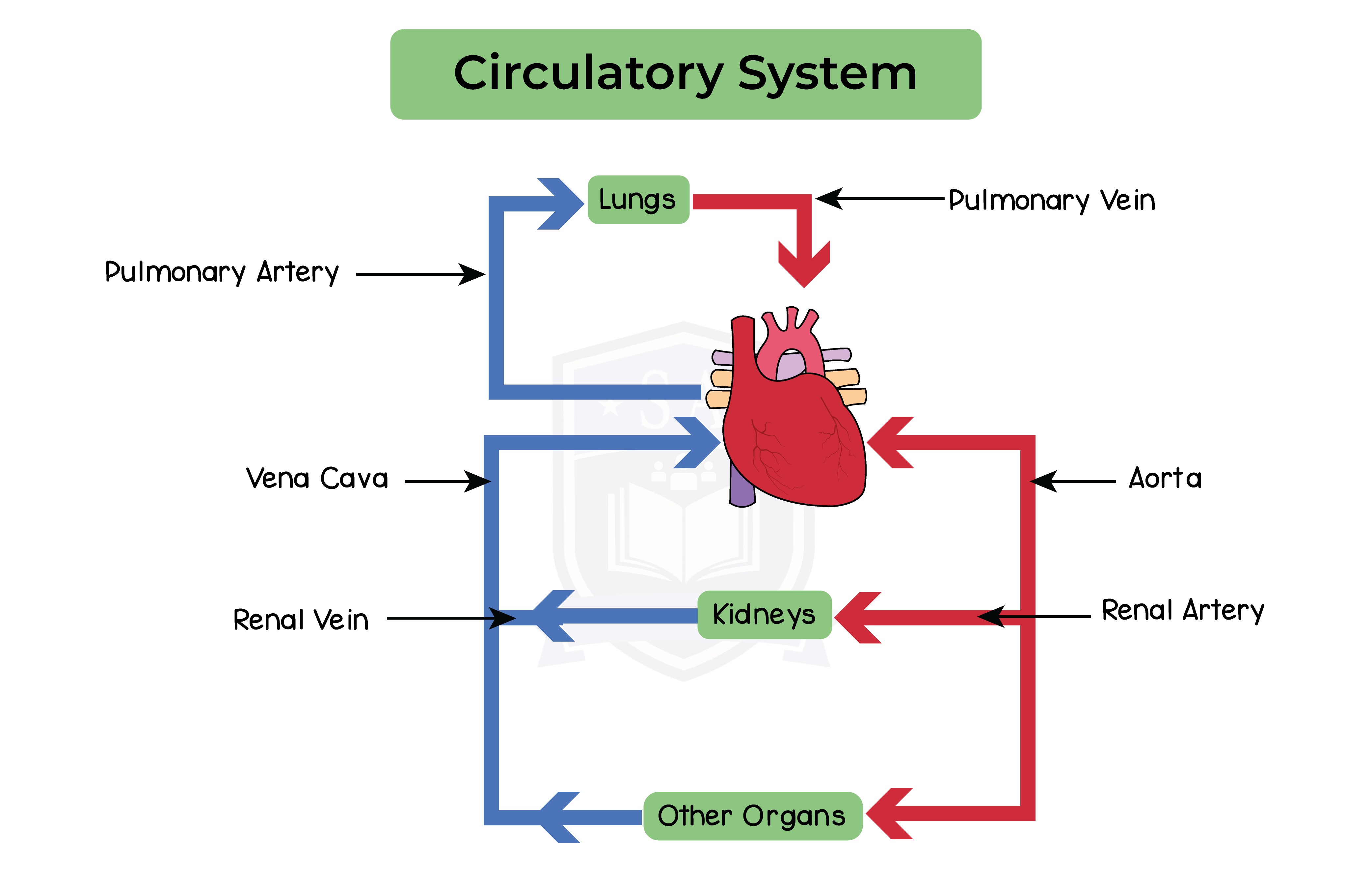REVISION NOTES
IGCSE Edexcel Biology
2.11 Transport (in Human)
2.11.1 Understand why simple, unicellular organisms can rely on diffusion for movement of substances in and out of the cell
Unicellular organisms:
- Large surface area (SA) to volume (V) ratio
- Distance between the surface of the organism to its centre is very small
- Do not have specialised exchange surfaces or transport systems
- Metabolic demand is low
- Diffusion, osmosis and active transport occur at sufficient rates
2.11.2 Understand the need for a transport system in multicellular organisms
Multicellular organisms:
- Relatively small SA:V ratio
- Diffusion, osmosis and active transport cannot occur at a sufficient rate
- Higher metabolic needs
- Diffusion distance is larger
- Have exchange surfaces and transport systems
- Exchange surfaces in animals include:
- Alveoli for gas exchange
- Villi for absorption of digested food
- Exchange surfaces in plants include:
- Root hairs for absorption of mineral ions and water
- Leaves for gas exchange
2.11.3 Describe the role of phloem in transporting sucrose and amino acids between the leaves and other parts of the plant
Phloem function:
- Transport vessel from root to stem and leaves
- Arranged into vascular bundles
- Transport food such as:
- Amino acids
- Sucrose
- Movement of food occurs in any direction throughout the plant
- Translocation
Phloem structure:
- Living cells that are hollow
- Abundance of mitochondria for cellular energy
- Substances move between cells
- Movement through pores (end walls called sieve plates) in the cell wall
2.11.4 Describe the role of xylem in transporting water and mineral ions from the roots to other parts of the plant
Xylem function and structure:
- Transport vessel from root to stem and leaves
- Arranged into vascular bundles
- Transport water and minerals
- Transport from roots to the stem and leaves
- Made up of dead cells forming a hollow tube
- Strengthened by lignin (adapted for water transport)
- No end walls
2.11.5B understand how water is absorbed by root hair cells
Absorption of water by root hair cells:
- Water is transported into root hair cells
- Through osmosis
- Water then travels through the root cortex and into xylem vessels
- Water in the xylem is transported to leaves
- Water enters mesophyll cells
DIAGRAM of word equation:
Root hair cell → root cortex cells → xylem → leaf mesophyll cell
Root hair cells adaptations for absorption:
- Single-cell extensions of epidermis cells in the root
- Grow in between soil particles
- To absorb water and minerals
- Increase SA:V ratio, increasing rate of absorption
- Minerals and sugars in the cytoplasm of root hair cells decrease their water potential
- Forces water to move into them through osmosis
- Uptake of water by osmosis
- Uptake of mineral ions by active transport
2.11.6B Understand that transpiration is the evaporation of water from the surface of a plant
Transpiration:
- Loss of water vapour from plant organs above ground such as:
- Leaf
- Stem
- Flowers
- Water loss through evaporation at the surface of spongy mesophyll cells
- Water diffuses out the stomata as vapour
- Air spaces between mesophyll cells and stomata increase surface area
- Rapid evaporation can occur when stomata is open
Effect of transpiration:
- Replaces the water lost through transpiration
- Water can be transported in continuous unbroken column
- Due to cohesion between water particles
- Produces tension in the water in xylem vessels
2.11.7B Understand how the rate of transpiration is affected by changes in
Effect of humidity:
- Rate decreases as humidity increases
- Humidity measures the amount of water vapour in the air
- Increasing humidity decrease the concentration gradient between the environment and the leaf
Effect of wind speed:
- Rate increases as wind speed increases
- Wind removes water vapour from the area around the plant
- Increases the concentration gradient between the leaf and air
- Increases transpiration
Effect of temperature:
- Rate increases as temperature increases
- Particles have increased kinetic energy
- Increases rate of transpiration
Effect of light:
- Rate increases as light intensity increases
- Guard cells become more turgid at increasing light intensities
- Stomata opens up and increases water loss
2.11.8B Practical: investigate the role of environmental factors in determining the rate of transpiration from a leafy shoot
Effect of light intensity practical:
Method:
- Set up a potometer as seen above
- Cut the shoot of a plant underwater
- Prevents air from entering the xylem
- Creates continuous stream of water
- Remove capillary tube from the beaker of water
- Allow a single air bubble can to form in the tube
- Place the tube back in water
- Set up a lamp 20cm away from the plant
- After 3 mins, record the starting position of the air bubble based on the volume scale
- An hour later record the end position of the air bubble
- Set up the lamp 10cm away from the plant
- Reset the bubble by opening the tap below the reservoir
- Repeat steps 7-8
- Calculate rate of transpiration using the following formula:
Results:
- Rate of transpiration increases with increasing light intensity
- Bubble moves cover a larger distance when the lamp is placed closer to the leaf
- Increasing light increases transpiration
- Stomata is open leading to increased water loss
- Other environmental factors can be investigated by:
- Using a fan at different speeds for wind speed
- Changing the temperature of the room
2.11.9 Describe the composition of the blood: red blood cells, white blood cells, platelets and plasma

2.11.10 Understand the role of plasma in the transport of carbon dioxide, digested food, urea, hormones and heat energy
2.11.11 Understand how adaptations of red blood cells make them suitable for the transport of oxygen, including shape, the absence of a nucleus and the presence of haemoglobin
Adaptations of red blood cells
- RBCs are specialised cells
- Carry oxygen to respiring cells
- Adaptations:
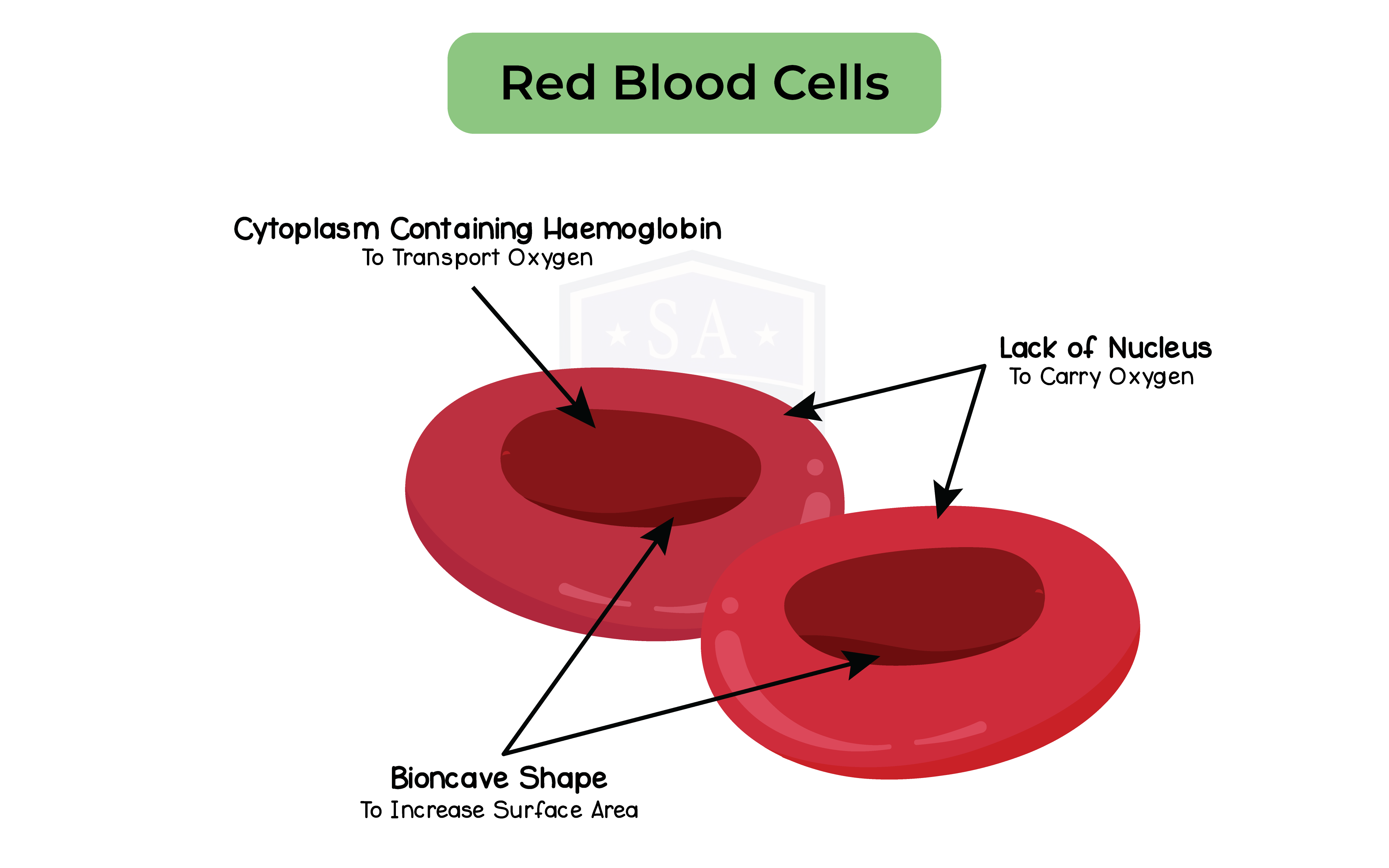
2.11.12 Understand how the immune system responds to disease using white blood cells, illustrated by phagocytes ingesting pathogens and lymphocytes releasing antibodies specific to the pathogen
White blood cells
- Part of the body’s immune system
- Defend against pathogenic microorganisms
- Two main types of white blood cell:
- Phagocytes
- Lymphocytes
Phagocytes
- Carry out phagocytosis by engulfing and digesting pathogens
- Phagocytes have a sensitive cell surface membrane
- It can detect chemicals produced by pathogenic cells
- Once they encounter the pathogenic cell, they will engulf it and release digestive enzymes to digest it
- This is a non-specific immune response
Phagocytes can be recognised by their multi-lobed nucleus and their granular cytoplasm.
Lymphocytes
- Lymphocytes can be recognised by their large round nucleus that takes up nearly the whole cell and their clear, non-granular cytoplasm
- Lymphocytes produce antibodies
- Y-shaped proteins with a shape that is specific (complementary) to the antigens on the surface of the pathogen
- This is a specific type of immune response
- The antibodies produced will only fit one type of antigen on a pathogen
Agglutination
- Antibodies attach to the antigens and cause agglutination (clumping together)
- Leads to pathogenic cells being unable to move easily
- At the same time, chemicals are released that signal pathogenic presence to phagocytes
Response to infection
- The pathogen enters the bloodstream and multiplies
- A release of toxins (in the case of bacteria) and infection of body cells causes symptoms in the patient
- Phagocytes that encounter the pathogen recognise that it is an invading pathogen and engulf and digest (non-specific response)
- Eventually, the pathogen encounters a lymphocyte which recognises its antigens
- The lymphocyte starts to produce specific antibodies to combat that particular pathogen
- The lymphocyte also clones itself to produce lots of lymphocytes (all producing the specific antibody required)
- Antibodies cause agglutination of pathogens
- Phagocytes engulf and digest the agglutinated pathogens
- After the patient has recovered, they retain antibodies specific to the disease as well as memory cells (lymphocytes that recognise the pathogen)
- If the patient encounters the same pathogen again, it will trigger a secondary immune response
- Memory cells can produce much larger quantities of the required antibody in a much shorter time to fight off the pathogen before the patient suffers any symptoms
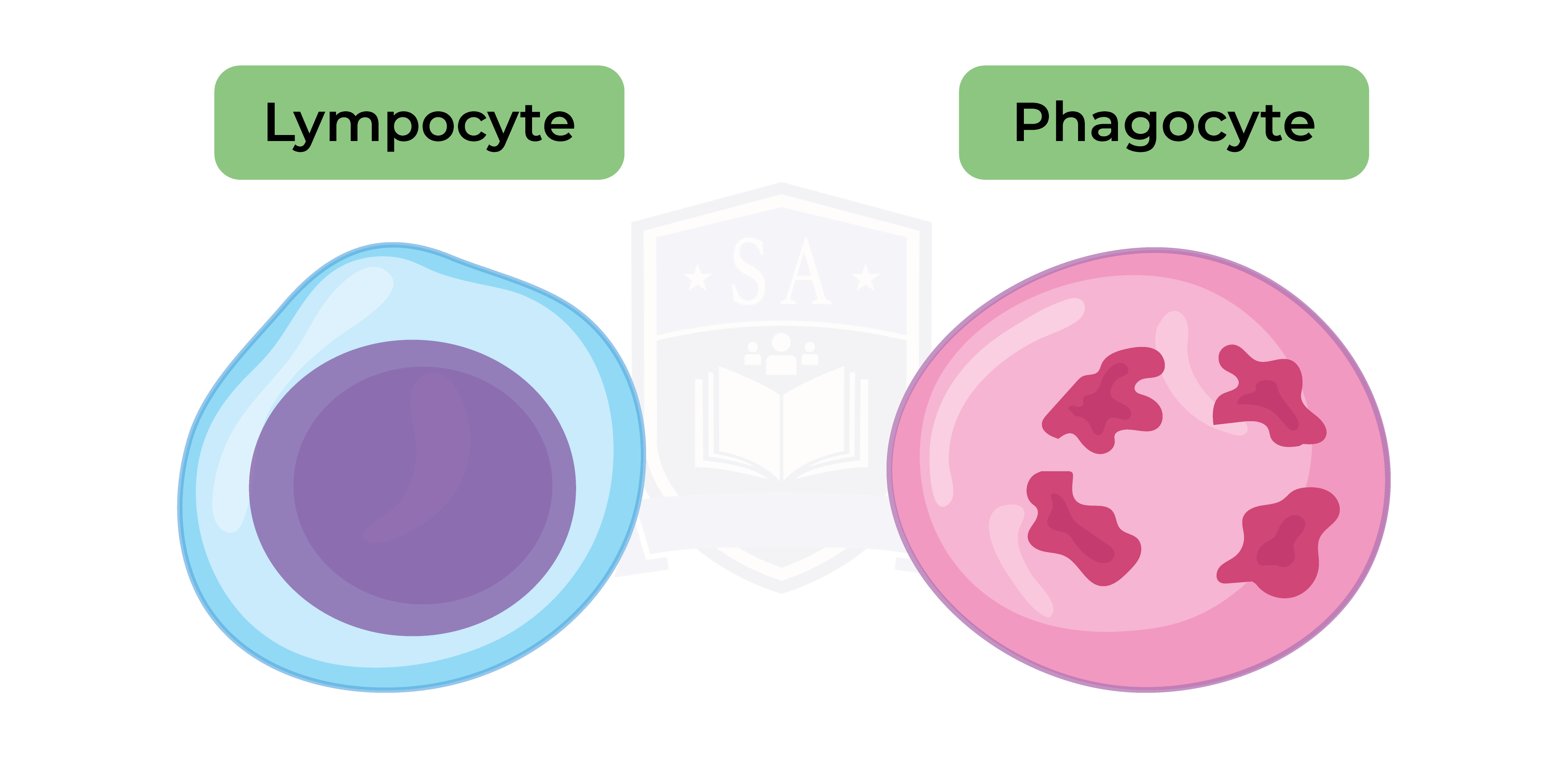
2.11.13B Understand how vaccination results in the manufacture of memory cells, which enable future antibody production to the pathogen to occur sooner, faster and in greater quantity
Vaccines:
- Used to induce immunity to infectious diseases
- Contains harmless versions of a pathogen
- Several methods by which scientists ensure that vaccines contain harmless pathogens such as:
- Killing the pathogen
- Making the pathogen unable to grow or divide (attenuated vaccine)
- Using fragments of pathogens, rather than whole cells
- May be administered orally, nasally or via an injection
How vaccines work:
- Once in the bloodstream, the antigens contained within the vaccine can trigger an immune response in the following way:
- Lymphocytes recognise the antigens in the bloodstream
- The activated lymphocytes produce antibodies specific to the antigen encountered
- Memory cells and antibodies subsequently remain circulating in the bloodstream
Future infection by the same pathogen will trigger a response that is much faster and much larger compared to the initial response
- Due to the rapid nature of the response, the pathogen is unable to cause disease and the individual is said to be immune
2.11.14B Understand how platelets are involved in blood clotting, which prevents blood loss and the entry of micro-organisms
Platelets:
- Involved in blood clotting and scab formation
- At location of cut or puncture in the skin
How it works:
- Platelets arrive to wound site to stop the bleeding
- Platelets release chemicals that cause soluble fibrinogen proteins to convert into insoluble fibrin
- Forms an insoluble mesh across the wound
- Traps red blood cells leading to clot formation
- The clot dries and develops into a scab
- This protects the wound from bacteria
Importance of blood clotting:
- Prevents continued / significant blood loss from wounds
- Scab formation seals the wound
- Insoluble patch prevents entry of microorganisms that could cause infection
- Remains until new skin grows underneath it, sealing the skin again

2.11.15 Describe the structure of the heart and how it functions
Structure of the heart:
- Left side: thicker muscular wall; right side: thinner muscular wall
- Four chambers:
- Left atrium
- Left ventricle
- Right atrium
- Right ventricle
- Pumped away from the heart into: arteries
- Return to the heart in: veins
- Septum: muscle wall that separates two sides of the heart
- Coronary arteries: supply blood to the muscle tissue in the heart
- Valves: to prevent blood flowing backwards
Pathway of blood through the heart:
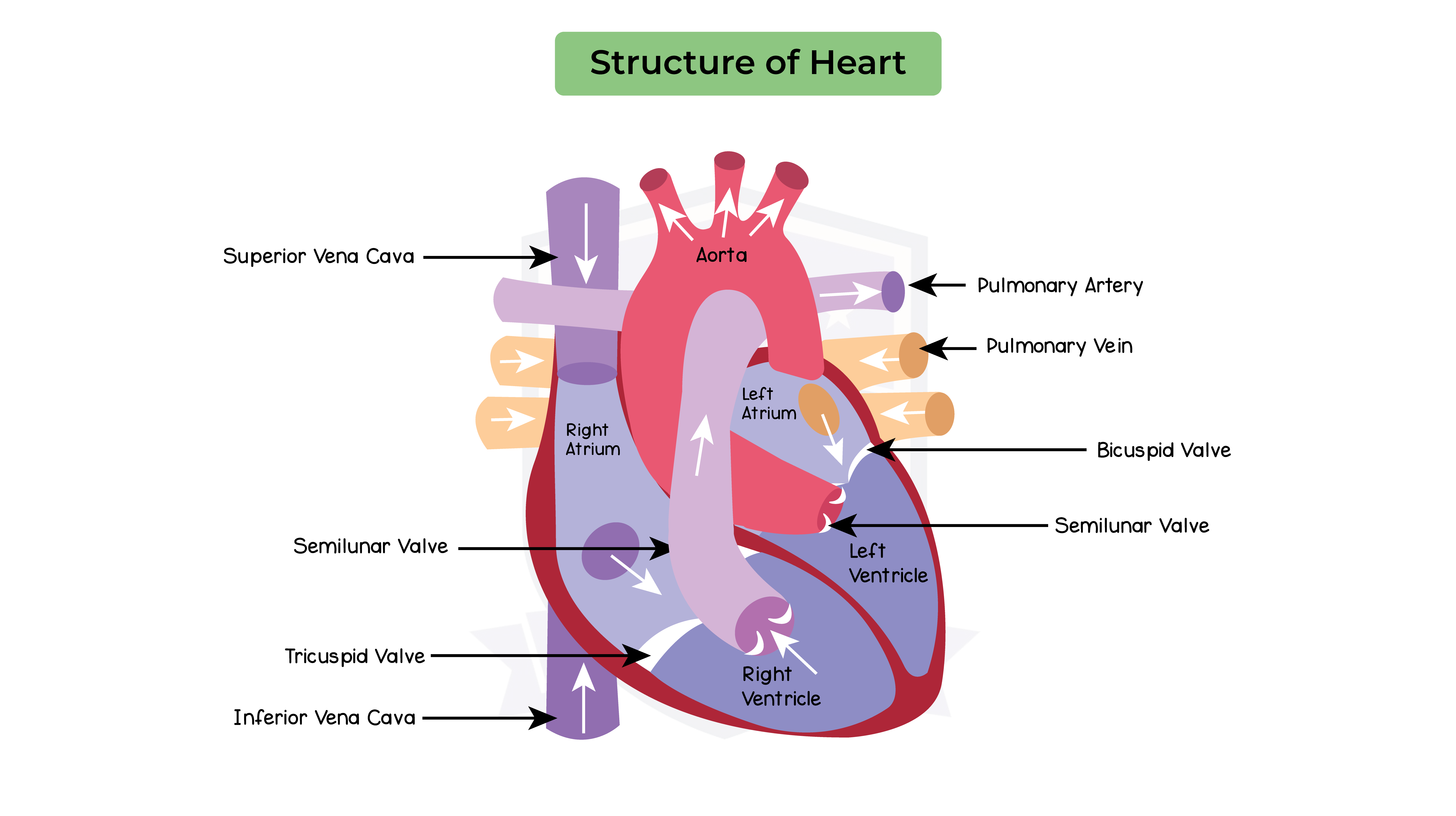
2.11.16 Explain how the heart rate changes during exercise and under the influence of adrenaline
Heart rate:
- The heart pumps blood around the body in order to supply oxygen and glucose to respiring cells
- The blood also removes waste products from the respiring cells
Heart rate during
- During exercise:
- The cells of the muscles respire more rapidly to provide energy for muscle contraction
- Respiration may be aerobic if exercise is moderate
- Respiration may be anaerobic if exercise is more intense
- Increase in respiration
- Increases oxygen and glucose requirement
- Increase production of waste products
- The nervous system responds to this by stimulating the following changes:
- Heart rate increases to deliver oxygen and glucose and remove waste more frequently
- The volume of blood pumped out of the heart increases to deliver bigger quantities of oxygen and glucose
- Production of the hormone adrenaline increases heart rate as part of a ‘fight or flight’ response
Heart rate after exercise:
- At the end of a period of exercise, the heart rate may remain high for a period of time
- oxygen is required to pay off oxygen debt
- Oxygen debt is the oxygen required to break down the lactic acid
- The time taken for the heart rate to return to the resting rate is called the recovery time
- A physically fit person will have a lower resting heart rate and a shorter recovery time compared to an unfit person
2.11.17 Understand how factors may increase the risk of developing coronary heart disease
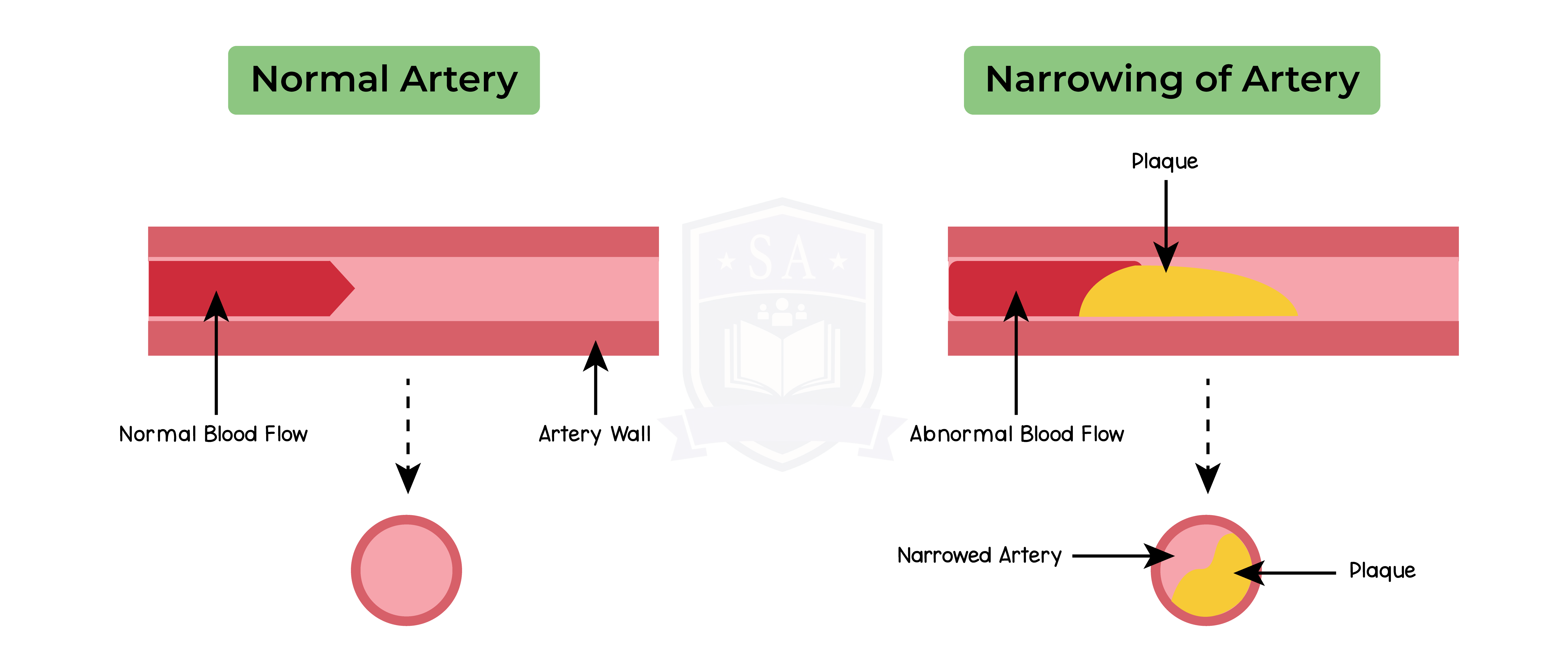
2.11.18 Understand how the structure of arteries, veins and capillaries relate to their function
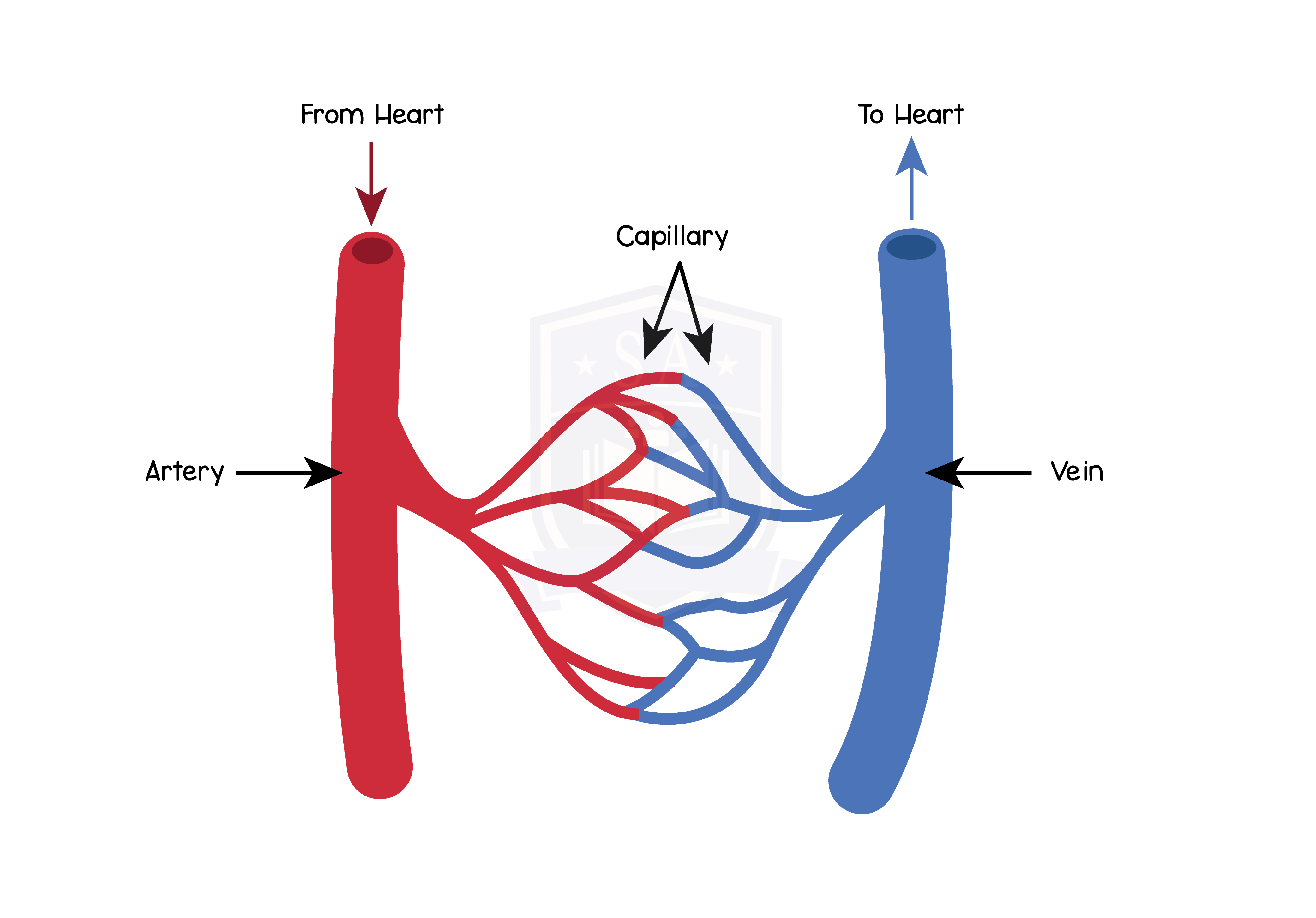
2.11.19 Understand the general structure of the circulation system, including the blood vessels to and from the heart and lungs, liver and kidneys
Always remember:
- Artery
- Bring blood away from the heart
- Bring blood towards organ
- Vein
- Bring blood back to the heart
- Bring blood away from the organ
